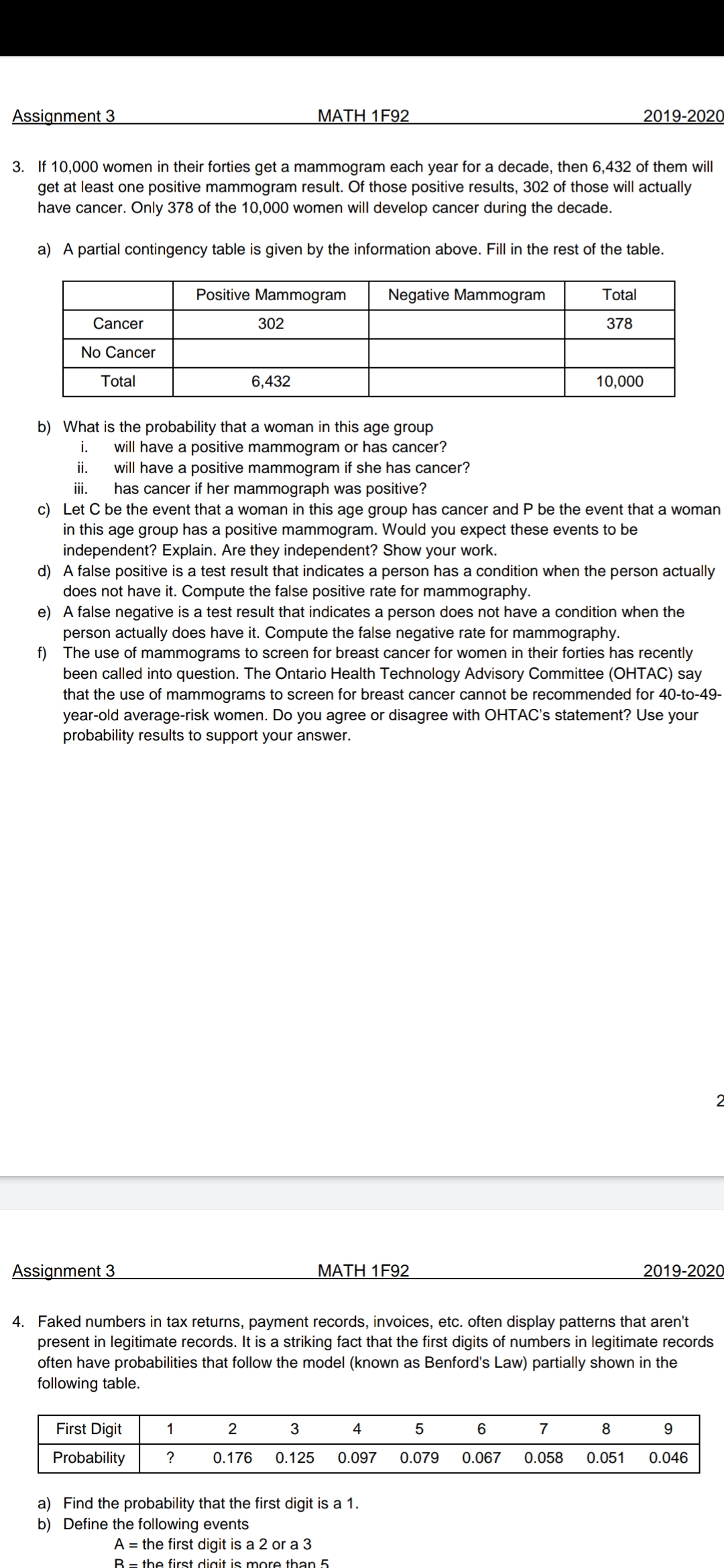Find the probability
Assi nment MATH 1F 2 2 1 -202 3. If 10,000 women in their forties get a mammogram each year for a decade, than 6,432 of them will get at least one positive mammogram result. Of those positive results, 302 of those will actually have cancer. Only 378 of the 10,000 women will develop cancer during the decade. a) A partial contingency table is given by the information above. Fill in the rest of the table. \"\" b) What is the probability that a woman in this age group i. will have a positive mammogram or has cancer? ii. will have a positive mammogram if she has cancer? iii. has cancer if her mammograph was positive? 0) Let C be the event that a woman in this age group has cancer and P be the event that a woman in this age group has a positive mammogram. Would you expect these events to be independent? Explain. Are they independent? Show your work. d) A false positive is a test result that indicates a person has a condition when the person actually does not have it. Compute the false positive rate for mammography. e) A false negative is a test result that indicates a person does not have a condition when the person actually does have it. Compute the false negative rate for mammography. f) The use of mammograms to screen for breast cancer for women in their forties has recently been called into question. The Ontario Health Technology Advisory Committee (OHTAC) say that the use of mammograms to screen for breast cancer cannot be recommended for 4040-49- year-old average-risk women, Do you agree or disagree with OHTAC's statement? Use your probability results to support your answer. Assi nment 3 MATH 1F92 2019-2020 4. Faked numbers in tax returns, payment records, invoices. etc. often display patterns that aren't present in legitimate records. It is a striking fact that the first digits of numbers in legitimate records often have probabilities that follow the model (known as Benford's Law) partially shown in the following table. First Digit 1 2 3 4 5 6 7 8 9 Probability ? 0.176 0.125 0.097 0.079 0.067 0.053 0.051 0.046 a) Find the probability that the first digit is a 1. b) Define the following events A = the first digit is a 2 or a 3 R = the first dinit ig mnm than 5







